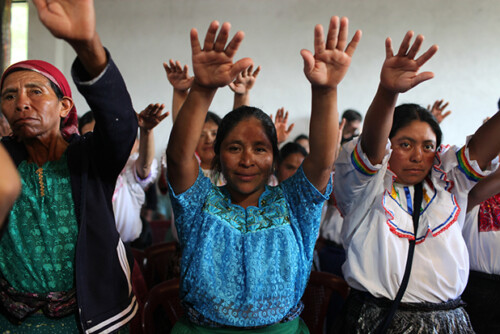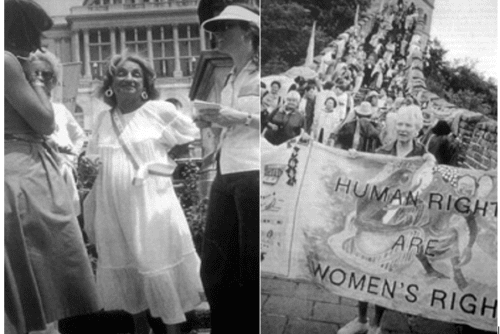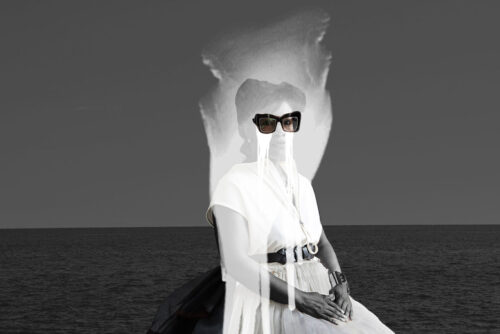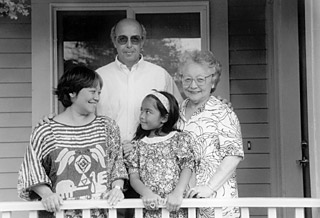The New Carving Up of Things
The Calcutta Chromosome offers an alternative story to the one recounted by Scottish bacteriologist Sir Ronald Ross (1857-1932) in Memoirs, with a Full Account of the Great Malaria Problem and Its Solution (1923), regarding his discovering of the link between the Anopheles mosquito and Plasmodium, the parasite causing malaria.8 Within Ghosh’s novel, an Indian expatriate named L. Murugan devotes himself to correcting the historiographical record that, according to him, effaces the central role played by untouchable Indian lab assistants qua janitorial staff in Ross’ Nobel-prize-winning work. Along the way, Murugan proposes the Indian origins for the concept underlying recombinant DNA, and speculates on the far-reaching technological-spiritual experiments that these subaltern assistants conduct and at which they succeed.
Through the travails of Murugan, who journeys to Calcutta seeking further support for his Other Mind theory (more on this later), the book not only contours an alternative to Western science—an express “counterscientific” epistemology–but also dramatizes the resistance to and mockery of these counterhegemonic ideas by even those immigrant confreres who might be expected to be sympathetic. For instance, when Murugan speculates that a local Indian group in the late-nineteenth century led by a mysterious woman named Mangala has succeeded, through the modification of the process whereby Plasmodium transports itself from host to host, in transferring human personalities across bodily substrates (thereby effectively instantiating “immortality”) Antar mocks Murugan’s explanation by comparing it to ancient mystical beliefs in “Osiris, Horus and Amun-Ra.”9 Through such overtly debated clashes between scientific method and its counter, e.g., non-Western belief systems that science remade into primitive superstitions, Ghosh forwards his postcolonial treatment of epistemic authority, how, in modernity, science becomes the most authorized way of knowing.
Punning on “tropics”—the equatorial zones as well as the adjectival form of “trope,” a discursive figuration—Diane Nelson claims that storytelling, troping, can be thought of as a kind of technology, a colonial laboratory or “hot, fertile […] space” in which one “finds things out,” specifically about how tropical medicine has hypothesized and “produce[d] new ways of figuring the human.”10 Nelson considers as technological, then, both the gestating grounds of tropical colonial encounter where imperialist occupiers experiment on local indigenous bodies—“mechanical and biological experiments are nothing new for colonized peoples: their sinews, hearts, minds, bodies, and germ lines repeatedly have been used in the service of alien invaders”—and the very time-bending strategies of Ghosh’s narrative that James Thrall neatly divides into three distinct chronologies. In the first timeframe, NYC in a futuristic moment in the late-1990s/early oughts, the protagonist Antar (an Egyptian immigrant information worker and colleague of Murugan) sits at his computer for the duration of two hours. This time frame flashes back to Antar’s past in which he recalls his acquaintance with Murugan, an amateur historian of science who tends to lecture more than converse, and the many phone and email messages Murugan sends to Antar, and that the latter ignores as the ravings of an obsessed scholar. With the aid of his supercomputer and a holographic headset, or Sim Visor, Antar eventually discovers Murugan in a Indian madhouse, but that discovery coincides with Antar’s relapse into a malarial fever (he had contracted the disease in his youth) so that the three distinct chronologies among which the book alternates start to occupy the same delirious plane of time-space (more on this in a moment).
The second timeframe, Calcutta in August 1995, dramatizes Murugan’s encounters with local denizens such as Urmila Roy, journalist for Calcutta magazine; Sonali Das, a celebrity actress and consort to the mysterious real estate mogul Ronen Haldar; Mrs. Aratounian, the Armenian proprietress of Dutton’s Nursery and in whose apartments Murugan lodges; and a four-fingered (thumbless) teenager wearing a Pattaya Beach tourist t-shirt who follows Murugan around the city, and whose name is not revealed to Murugan, but whose physical peculiarity suggests he is an iteration of the character Laakhan/Lutchman—a character interwoven in the novel’s nineteenth-century plot. Much of the second timeframe is devoted to conversations between Murugan and residents like Urmila, in which Murugan explains his Other Mind theory, shorthand for Mangala’s practice in opposition to Western science and its privileging of positivist claim-making and the empirical authority of repeatable observable events.
In the third timeframe, late-nineteenth-century to early-twentieth-century laboratories in both the middle latitudes and the tropics, various British researchers are unaware that the actions of their colonial servants—e.g., Mangala and Laakhan/Lutchman—have been leading them toward key discoveries in the multiple morphologies of Plasmodium—the microorganism causing malaria. As Frank Schulze-Engler puts it, a “racist spirit of supremacy over the ‘natives,’” allows European scientists like Ross not only to conscript the indigenous as experimental medical subjects, akin to laboratory mice, but also to appropriate and disavow as knowledge the contributions made by indigenous sources.11 According to Murugan, Mangala aids these Europeans not out of servile naiveté but because as a local healer of syphilitics, she requires proximity to cultures of malarial blood (deliberate infection with malaria acts as a prophylactic against syphilitic dementia). Her practice, in other words, capitalizes on a windfall characteristic that may have rendered the hosting of Plasmodium symbiotic (or selective for longterm survival) prior to the antibiotic treatment of venereal disease.
Significantly, the narrative negotiates between two imperatives in recounting this temporally remote setting: dramatizing without comment the actions of Mangala’s nineteenth-century followers and having Murugan in the later timeframe recast these practices as affirmed by Western science. Explaining why Mangala’s group operates through strategic silences that seem not to conform to standards of repeatable empirical evidence, Murugan posits their cleaving to a principle of radical uncertainty: “[they refuse] all direct communication […] because to communicate, to put ideas into language, would be to establish a claim to know—which is the first thing that [they] would dispute […] [Also] they believed that to know something is to change it [and the corollary that] one way of changing something—of effecting a mutation, let’s say—is to attempt to know it, or aspects of it.”12 Described here is what contemporary physics calls “the observer effect,” with the operative principles of these late 1800s “counterscientists” corresponding in the 1990s to ideas in the scientific mainstream.13
If imperialism places African and Asian beliefs—e.g., in Osiris, Horus and Amun-Ra—in a past temporality that lags behind “the modern,” Ghosh challenges such linear history in the very structure of his novel, offering three alternating time periods that meld, nest, and ultimately coexist on a single plane. During Murugan’s August 1995 visit to Calcutta, for example, he falls asleep under a mosquito netting but then travels, whether by Lethe or through some other means, to the late-nineteenth-century laboratory of Ronald Ross:
When he looked down at his body, lying flat on the bed, he could not tell whether he was waiting for them [the malarial mosquitoes] to show themselves to him, or whether he was showing himself to them […] Involuntarily he flexed his shoulders […] waiting to discover where they would touch him first, where he would first detect the tingling prick of their bites […] They were standing around his bed in attitudes of concern, like nurses and doctors’ assistants, waiting for him to sink into anesthetized oblivion. And now the bearded Englishman reappears, dressed in his white coat […] he reaches in, with a little butterfly net, pulls it out and expertly traps an engorged mosquito in a test tube […] puffs on his cigar and [blows] into the test tube; the insect dies, the tiny buzzing creature that is carrying his blood inside it.14
“They” begins by referring to the malarial mosquitoes hovering outside the mosquito netting under which Murugan lies in his rented Calcutta rooms but evolves into nineteenth-century colonial scientists surrounding the research specimen, himself. When Murugan wakes, he discovers traces of smashed glass—the broken test tube—near his feet, suggesting not a dream but a transposition of late-nineteenth and late-twentieth-century time periods. In both eras, brown-skinned bodies serve as experimental medical labor15 (and gestational surrogates), the only difference being the degree to which the medical research of each period is overtly tied to a militarized project of colonial expansion.
Underscoring how “the big discoveries in malaria research were primarily made by military scientists,” cultural anthropologist Diane Nelson recalls that “military campaigns [undergirding] colonial laboratories were waged against non-human actants as well as the ‘restless natives.’ As one French military analyst had it, ‘Fever and dysentery are the ‘generals’ that defend hot countries against our incursions and prevent us from replacing the aborigines that we have to make use of,’ complained a French colonial official in 1908.” Thus, a situational irony pervades the global environment of the novel’s frame-story: antimalarial campaigns designed to eliminate the watery breeding grounds of insects and parasitic microbes may have been too effective, for as we are told in The Calcutta Chromosome’s narrative present (and, indeed, in our historical present), the world faces a depletion of its water supplies.16 The point to be registered is that racialized military aims, as much as, if not more than any altruistic desire to mitigate disease in natives propels the “present day” shrinking water supplies in Ghosh’s fiction (and arguably in the contemporary real world).17 Akin to STS scholar Michelle Murphy’s claims with regard to the temporal bleeding of the current petrochemical extractive economy into unknown reproductive effects in future generations, the imperialist aims of conquering and uprooting the Calcuttans in the novel feeds forward into the mutating reproductive milieu of the late-twentieth and early-twentieth-century New York City.
In a project both physical and metaphysical, the economic plan underwriting imperialist expansion—the material extraction of mineral, agricultural, fossil, and animal resources from far-flung lands and oceans—requires the conceptual wresting of human biologies from an embedded relation to the local environment. To be sure, not only human biologies but all biologies in modernity are displaced from the “entangled bank” of their natal ecosystems and made modular through a modern “scientific” classification system. Biological organisms are translated into a discursive system that reaggregates them by way of their visible somatic features and functions, placing them into families or races (phyla) of structural resemblance, rather than by way of, for instance, the stories (histoires) told about them throughout time. In such a system, the epidermal and (exo)skeletal boundaries of bodies come to matter more than in prior times, paving the way for the Enlightenment notion of the autonomous individual disconnected from both the sheltering elements in which they breathe, swim, and move and from the preexisting social-semiotic order into which they were ushered.18 By crossing the supposedly distinct temporal periods of the novel and the distinct spatial boundaries between organism and milieu (the latter point to be developed in a later section), Ghosh precisely challenges the localizing or dissectional magic (called imperialist science) that allows for the treatment of longterm denizens as disentangle-able from living places, storied/mythic significance, biological milieu, ecology, and cosmos.
In the arena of medicine, Cindy Patton, drawing on Foucault’s enunciation of biopower and biopolitics, points to the techniques of “the clinic” as exemplary of this wresting of the individual from a more embedded relation to the socio-natural environment: “The clinic [of the nineteenth century] is both a new ‘carving up’ of things and the principle of their verbalization in a form which we have been accustomed to recognizing as the language of a ‘positive science.’”19 Epitomizing that new “carving up,” physicians’ interactions with patients shifted over the course of the eighteenth century so that the key question, “Where does it hurt?,” displaced the more open-ended query, “What is the matter?,” in the inauguration of doctoring and treatment. While one can imagine responses to the latter including references to imbalances of forces in the cosmos, the divine order, the kingdom, the village, and so forth, “Where does it hurt?” localizes the field of interest to the clinical subject’s body. This new clinical gaze was decidedly noncosmological and pridefully so: its novelty, in other words, was staked on a proclaimed (but we might add, mystified) lack of an overarching theory—e.g., humoral theory or immunity theory—and “its abandonment of systems.”20 Medical discourse was reorganized along lines of clinical empiricism—the idea that phenomenon would surface as visible, observable evidence. The inheritance of such a carved up system (called clinical empiricism) goes hand in hand with the disdain for literary-cultural productions that, like Ghosh’s novel, retain and resuscitate a (cosmological) framework stressing the interconnectedness of organism and place/milieu, or the circling round—rather than mere linear progression—of biological events such as birth, growth, hosting, caretaking, aging, and decay– alternatively, the breaking down of complexly organized biological materials into simpler nutrients to sustain other (micro)organisms.
While biopolitical theory in a race studies vein often cites Foucault’s History of Sexuality, volumes one and two, and the College de France lectures as key theoretical touchstones,21 there has been less critical attention paid to what the implications are for postcolonial and race studies of biopolitics limned with respect to the “clinic.” What insights could be yielded if race critics’ interest in biopolitics started with a critical eye not just toward the management of species-being or population aggregates (races), but toward the techniques outlined by Patton above—i.e., a set of practices wedded to assessing and manipulating human-bodies-and-world primarily in a disentangled and localized manner. An alternative to modernist biopolitics, in other words, may also lie in a retrieved (latent) cosmological orientation—an enmeshed, entangled biospheric approach—one in which the humans are not the only ones whose hurt we must mitigate. In pursuing an interpretive method adequate to Ghosh’s rejection of a “carved up” epistemology that treats human bodies and world in a disentangled and localized manner, we should consider the insights of the life sciences, in particular microbiology. Further, we might also reconsider a mostly repudiated vein of feminist theory/ethics (one focused on the putative differences in the ego-boundaries of girls and boys) for those aspects where it harmonizes with the insights of microbiology.
- Ross 1923. [↩]
- Ghosh 2001[1995]: 107. [↩]
- Nelson 2003: 247. [↩]
- Schulze-Engler 2009: 177-8. [↩]
- Ghosh 2001[1995]: 104-5. [↩]
- Thrall 2009. [↩]
- Ghosh 2001[1995]: 156-7. [↩]
- Melinda Cooper forthcoming study, “The Work of Experiment: Clinical Trials and the Production of Risk,” Clinical Labour: Tissue Donors and Research Subjects in The Global Bioeconomy, eds. Melinda Cooper and Catherine Waldby, (Durham: Duke UP), updates this history by looking at how in the contemporary moment, neoliberal risk societies enlist bodies for experimental “risk bearing” labor for medical experimentation in ways both evocative of but also distinct from colonial dynamics. [↩]
- See, for instance, former US Secretary of State Hilary Clinton’s prediction in 2012 that water security arises as the global issue of the next decade at http://www.bloomberg.com/news/2012-03-21/u-s-intelligence-says-water-shortages-threaten-stability.html. [↩]
- The dousing of torrid breeding grounds with pesticides/herbicides, designed to eliminate mosquitoes as much as human “insurgents,” has proved instrumental to the expansion of European and American empire throughout Asian and Southeast Asian (e.g., Agent Orange in the Vietnam War) from the nineteenth through the twentieth centuries. [↩]
- Michel Foucault Order of Things, p. 128-138 and Barbara Duden, The Woman Beneath the Skin: A Doctor’s Patients in Eighteenth-Century Germany, (Cambridge: Harvard UP, 1998). [↩]
- Cindy Patton, Rebirth of the Clinic: Places and Agents in Contemporary Health Care, (Minneapolis: U of Minnesota P, 2010): xvi-xvii. [↩]
- Patton 2010: xvii. [↩]
- Rey Chow, The Protestant Ethnic and the Spirit of Capitalism, (New York: Columbia UP, 2002); Jasbir Puar, Terrorist Assemblages: Homonationalism in Queer Times, (Durham: Duke UP, 2007). [↩]





